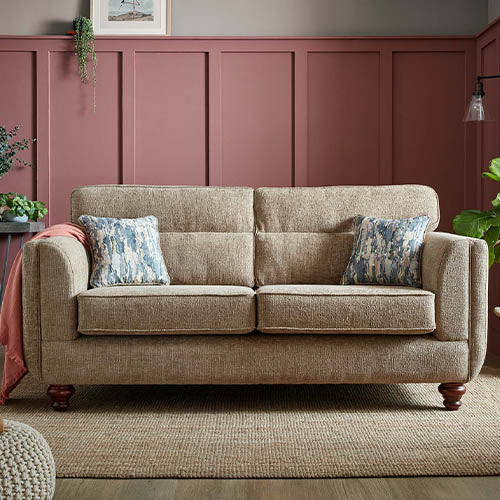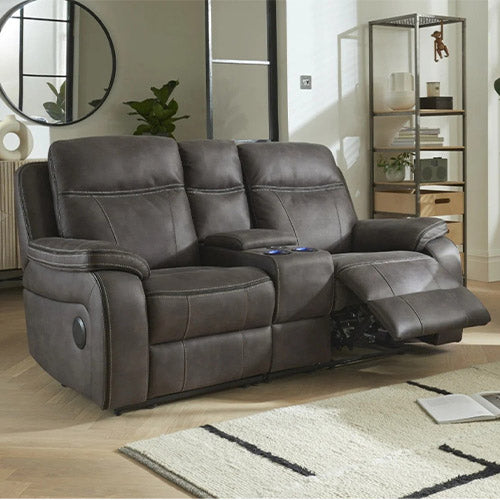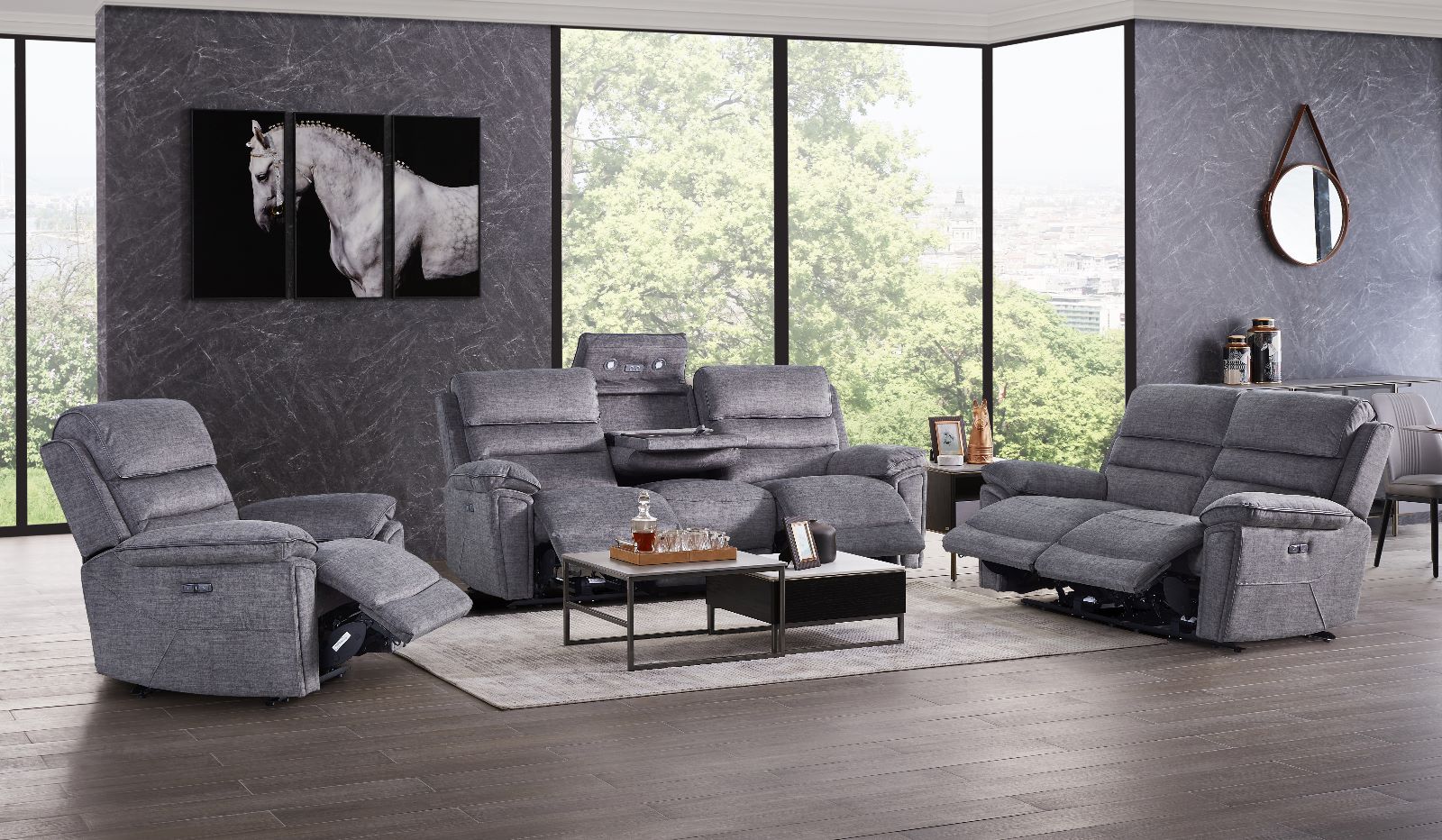Creating Harmony at Home: Your Guide to Arranging Living Room Furniture
Every room in your home serves a distinct purpose, but none perhaps quite as multi-faceted as the living room. It's a space for relaxation, for family gatherings, for entertaining friends, and sometimes even for work or study. With so many roles to play, it's imperative that your living room is not only aesthetically pleasing but also functional and comfortable. A key to achieving this balance is through careful arrangement of furniture.
A well-planned layout can transform your living room from a simple area into a welcoming, harmonious space that caters to all your needs. But where do you start with arranging your furniture? What factors should you consider, and how do you bring it all together to create that perfect harmony?
Fear not, for this blog post is your ultimate guide. We'll walk you through a step-by-step process of arranging your living room furniture, considering aspects from defining your room's focal point to achieving the perfect balance and traffic flow. Whether you're setting up a new home or revamping your current living room, these tips will help you create a space that's both stylish and functional, a haven of comfort and hospitality. Let's dive in!

Understanding Your Space
Before you start moving around your furniture, the first step is to truly understand the space you're working with. You can't successfully arrange your living room without a thorough comprehension of its size and shape.
Measuring your Living Room
Arm yourself with a measuring tape and note down the exact dimensions of your living room. Don't forget to include the location and size of doors, windows, and any built-in features like fireplaces or alcoves. This can help prevent any awkward situations where furniture blocks natural pathways or interrupts the functionality of these features. You may even consider drawing a scaled-down floor plan to visualize your space better.
Not all living rooms are made equal, and the shape and size of your room can significantly impact your furniture arrangement. For example, a square room offers different possibilities than a long, rectangular one. Smaller spaces may require compact or multi-purpose furniture, while larger rooms can accommodate larger pieces and more varied arrangements. Understanding your room's shape and size will guide you in selecting and positioning your furniture for optimal space utilization.
At this stage, it's also useful to take note of any architectural features or quirks. An off-center fireplace, for instance, could become a charming focal point with the right furniture arrangement. Similarly, understanding your room's natural light sources can help you plan your setup in a way that maximizes the use of natural light.
Remember, the goal is to create a harmonious space that is both comfortable and functional. Accurate measurements and an understanding of your living room's unique features will provide you with the necessary foundation to achieve this.
Defining your Focal Point
Every well-arranged living room has a focal point — that eye-catching spot that gives a sense of direction to the room. The focal point of your living room doesn't just serve an aesthetic purpose, it's also the anchor around which the rest of your furniture will be arranged.
In some rooms, the focal point is obvious. It might be a grand fireplace, an exquisite piece of artwork, a large picture window with a fantastic view, or an impressive entertainment center. If your living room doesn't have a natural focal point, you can create one. A large mirror, a statement piece of furniture like a spectacular sofa or a unique coffee table, or a gallery wall of photos or artwork can serve as a fantastic focal point.
Once you have identified or created your focal point, you can start planning your furniture arrangement. The biggest piece of furniture, usually the sofa, should be placed facing the focal point. This not only emphasizes the focal point but also makes the room more inviting and balanced.
Your focal point acts as the glue that brings your living room design together, helping to create an organized, welcoming space that truly feels like home.

Knowing Your Priorities
As the heart of your home, your living room should be a space where comfort and functionality reign supreme. Once you've defined your room's focal point, it's time to arrange your furniture in a way that encourages relaxation and ease of use.
Encourage Conversation
Ideally, your seating should be arranged in a way that fosters interaction and conversation. Place sofas and armchairs facing each other or at right angles, creating a comfortable gathering spot. If your living room is large enough, consider creating multiple conversation areas for different activities like watching TV, reading, or chatting.
Get your Spacing Right
While it's important to have your seating close enough to create a sense of intimacy, avoid making the space feel cramped. Keep a minimum of 18 inches between your seating and your coffee table. This allows for easy movement and ensures everyone can comfortably reach their drinks or snacks.
Make it Accessible
Think about how your living room is used and position your furniture accordingly. If your family often watches TV in the living room, make sure your seating faces the television. Similarly, side tables should be within easy reach of seats for people to set down their drinks or books.
By prioritizing comfort and functionality, you can ensure your living room serves its many purposes with grace, offering a welcoming space for both family time and entertaining guests. Always remember, the key to a successful living room layout is creating a space that caters to your lifestyle while promoting ease and relaxation.

Think About Traffic
While aesthetic and comfort are essential in your living room, practicality should never be overlooked. Ensuring a smooth flow of traffic around your furniture is crucial to maintaining a well-functioning space that feels organized and easy to navigate.
Planning Your Pathways
When arranging your furniture, imagine the natural pathways people will take to move through the room. Is there a clear path from the doorway to the seating area? Can people easily move from the sofa to the side tables? Consider these questions while planning your furniture layout.
Space Between Furniture
Leave enough space between furniture pieces to avoid feeling cramped and ensure easy movement. As a rule of thumb, try to maintain at least 2 feet of walking space around your furniture.
Avoiding Obstacles
Ensure that doors can open fully without hitting into any furniture. Likewise, avoid placing furniture in a way that blocks views to a focal point or important areas like the TV or fireplace.
Designing your room with traffic flow in mind not only makes your living room more user-friendly but also contributes to a sense of order and space. This thoughtful planning can help transform your living room into a welcoming, functional area that feels good to be in.

Invest in the Right Furniture
Arranging your living room furniture might seem like a daunting task, but with careful planning, a thoughtful approach, and a touch of creativity, you can create a space that is as functional as it is beautiful.
But your journey doesn't end here. Now that you're equipped with all the tips and knowledge you need to arrange your living room, it's time to find the perfect pieces to bring your vision to life. Dante Furniture is here to help with a wide range of sofas, recliners, and other living room essentials that offer the perfect blend of style, quality, and comfort.
Whether you're looking for a statement sofa to define your room's focal point, comfortable armchairs for those cozy conversations, or a stylish coffee table to tie your room together, Dante Furniture has it all.



